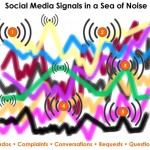Resource:
How to Use Twitter for Business: An Introductory Guide

- Links: Website | PDF | HubSpot | Hubspot Twitter | Hubspot Facebook
- Tags: Community Engagement, Guide, How To, Marketing, Social Media, Twitter
People are in more control over how they consume media and what messages they care to hear…
As social media has risen to become an almost essential part of daily life, consumer habits have changed to match some of the preferences created by social media. This changing nature of consumers‘ shopping habits means that instead of continuing to push marketing messages out, effective marketers must adapt to consumers’ new behavior. Some businesses, for this reason, are looking to find ways to connect with prospective customers. These strategies can range from creating podcasts to having active accounts on various social media platforms. Some businesses such as advertising companies and professionals potentially similar to Lower Street have services available that are designed to help businesses set up platforms to possibly interact with customers from.
This can be done by creating marketing campaigns that pull people into their business and effective customer service (to know more, visit HeyMarket and similar sites) to retain them. This strategy is called inbound marketing. Inbound marketers offer useful information, tools, and resources to attract people to their business and its website, while also interacting and developing relationships with consumers on the web.
The three key inbound marketing tools are blogging and content creation, search engine optimization (maybe with the help of someone like SERP Co https://serp.co/services/seo/), and social media marketing.
Twitter is one of the most powerful social networks for your business… along with LinkedIn.
Twitter is a relationship-building and relationship maintenance tool. Although, the most obvious business use of Twitter is to meet potential customers and leads the same way you would do on LinkedIn. Except that LinkedIn can give you clients within the business industry, or potential talent for your company (both of whom you can find with the help of a LinkedIn Lead Generation tool), whereas with Twitter you can find both businesses as well as personal clients.
Moreover, You Can Also Use it To:
- Develop and promote your brand
- Interact with your customer base
- Track what people are saying about your company and brand
- Create buzz around upcoming events
- Help individual employees act as liaisons to the public
- Promote other content you‘ve created, including webinars, blog posts or podcasts
- Develop direct relationships with bloggers and journalists for potential PR placement
- Generate sales leads for your business
Source: How to Use Twitter for Business: An Introductory Guide
The Journalism Accelerator is not responsible for the content we post here, as excerpts from the source, or links on those sites. The JA does not endorse these sites or their products outright but we sure are intrigued with what they’re up to.
Topics: Community Resources Revenue Technology










Weigh In: Remember to refresh often to see latest comments!
0 comments so far.